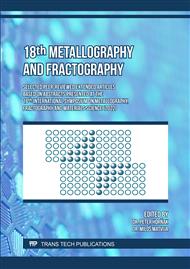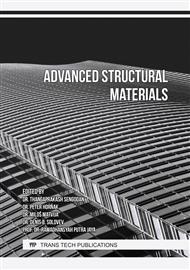p.131
p.137
p.143
p.149
p.155
p.161
p.167
p.175
p.183
Optimization of Raster Point Deposition Methodology for Deformation Analyses
Abstract:
Deformation analysis of sheet metal parts helps to map the distribution of deformation zones during pressing in problematic areas of the car bodywork. This allows to solve and prevent production problems at the press shop. The present work is focused on the optimization of the process by point pattern deposition on hot-dip galvanized metal sheets for deformation analyses. Obtained data are evaluated by GOM Argus system. Two technologies of the pattern deposition, namely electrochemical and laser are compared. Both deposition methods behave differently in the forming process and show different deformation values. The microstructure analysis done by a scanning electron microscope shows that the influence of laser setting on the material is more significant compared to electrochemical etching. Laser material shows thermal influence on the base material and the formation of micro notches. Both technologies are compared using light optical microscopy, scanning electron microscopy and electron backscattered diffraction.
Info:
Periodical:
Pages:
155-160
Citation:
Online since:
March 2023
Authors:
Price:
Сopyright:
© 2023 Trans Tech Publications Ltd. All Rights Reserved
Share:
Citation:



